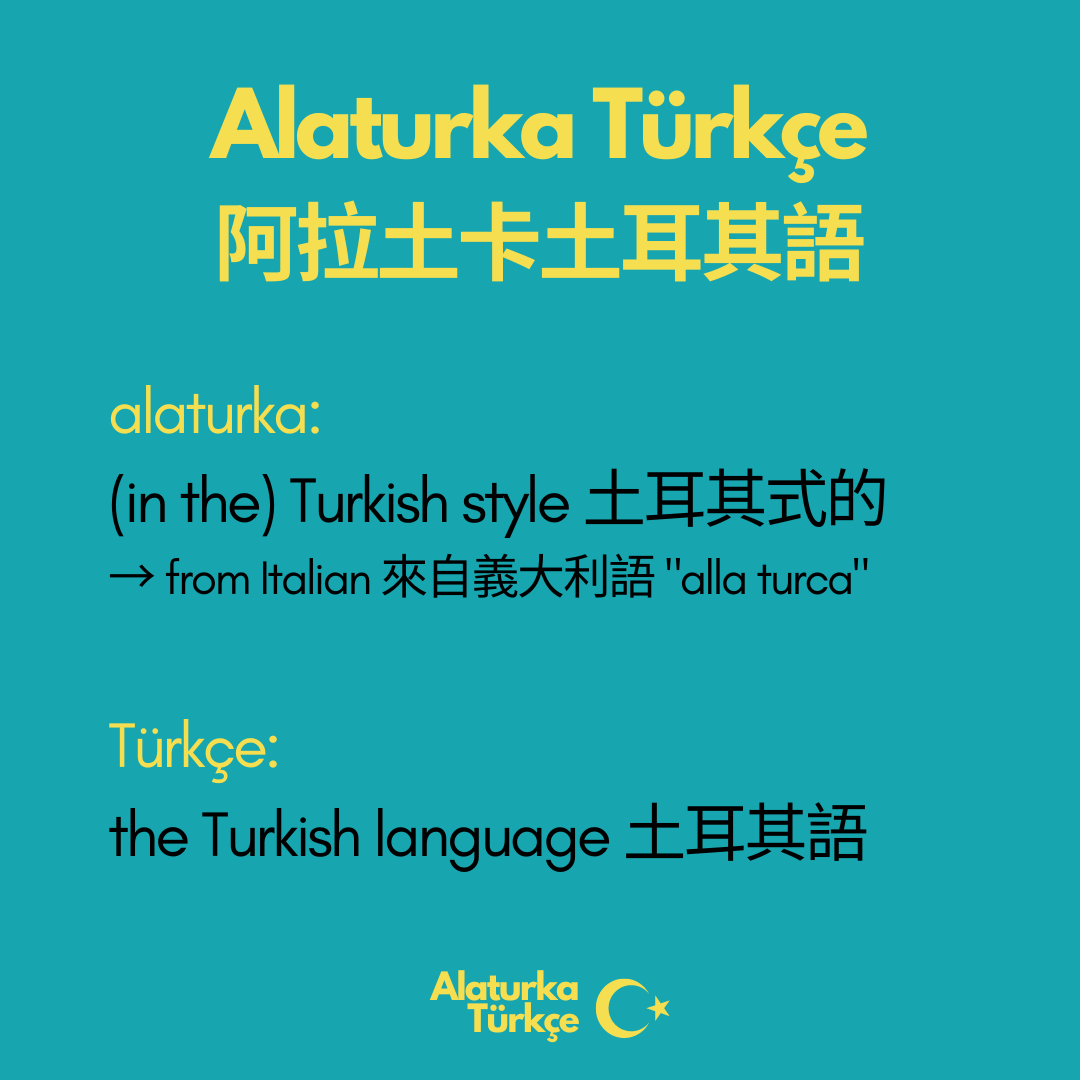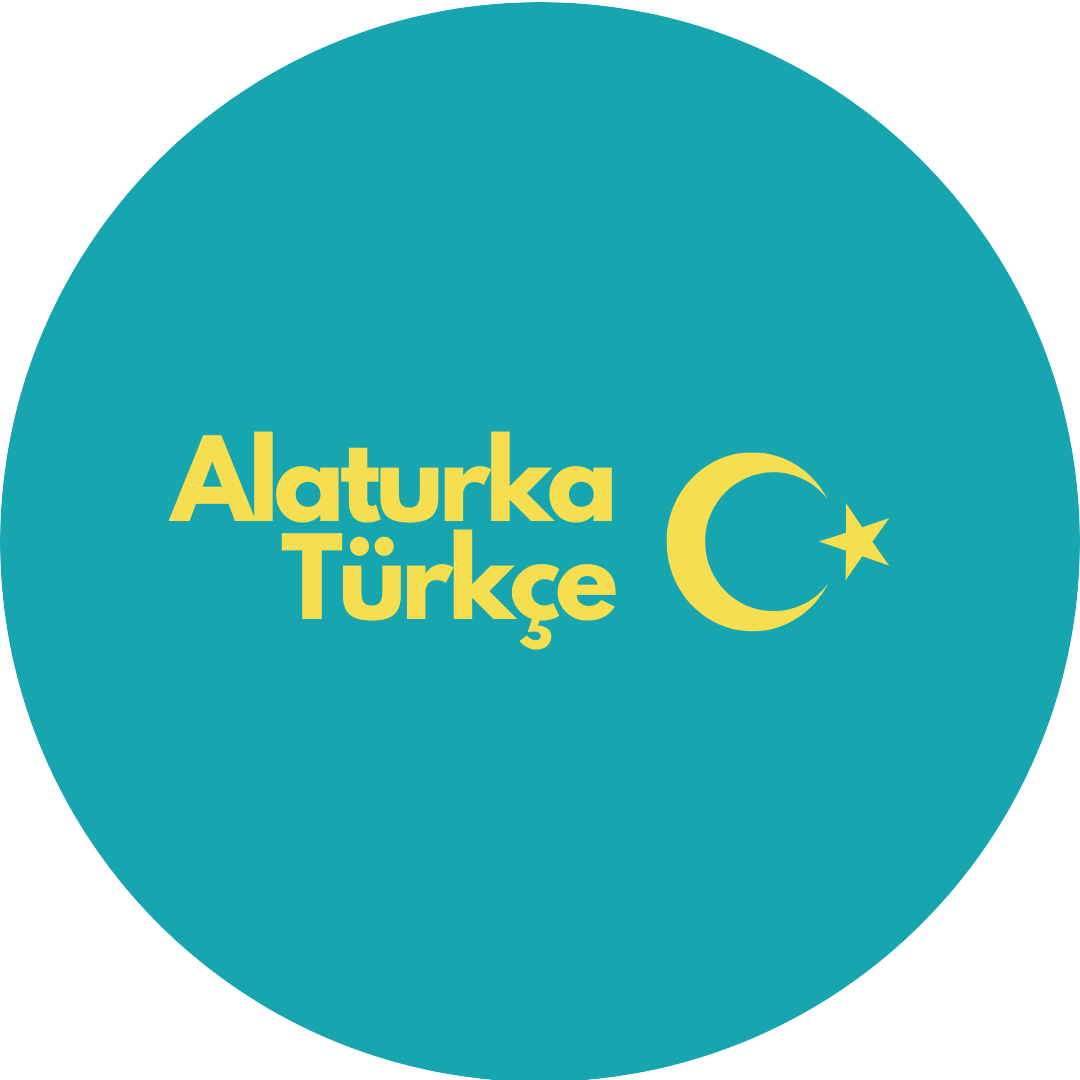[This article is written in both English and Chinese. Scroll down to read in either language. 本篇文章有英文和中文版本,可下滑看任一語言版本。]

About Alaturka Türkçe:
As a mission statement, this is a place for all things and everything Turkish. My hope is for it to become a comprehensive database / knowledge base on the Turkish language — from grammar, vocabulary (words, phrases, idioms, proverbs and slang), to literature (all types of writings: books, magazines, articles), and culture (including news, current affairs, shows, films and music) — in English and Chinese, so more people get to learn and have access to Turkish. And thus Alaturka Türkçe was born.
Now you might wonder: Why the name Alaturka Türkçe? Let’s take a look at what it means and you’ll see how it’s really the core of this website.
As shown in the image at the beginning of this article, “alaturka” means (in the) Turkish style / in the style of the Turkish people. In contrast, “alafranga” means (in the) Western style, or literally in the style of the French. The word alaturka comes from Italian “alla turca,” meaning in the style of the Turkish. The “alla” structure in Italian functions just like “à la” in French — in the style or manner of something. For example, “alaturka tuvalet” comes to mean the Turkish-style toilet, which lacks the bowl and seat, whereas “alafranga tuvalet” refers to the Western-style toilet as we know today. Türkçe of course means the Turkish language.
As illustrated above, “Alaturka Türkçe” translates to Turkish-style Turkish / Turkish in the style of Turkish. The concept is the core of this website as everything from a word, phrase to a grammar point is explained with a Turkish reference, e.g. a grammatical or linguistic term in Turkish, and in a way that makes it easier to understand, so when you would like to do some deeper research or further reading, this will be of great help. Also in this way, you will have a well-rounded understanding of the topic at hand, allowing you to cross-reference more easily in your studies, research etc.
Feel free to let me know what topics you’d like to explore/learn, and I’ll try to add it to the growing list of grammar topics etc. as I’m building this knowledge base from the ground up. Now let’s delve into the world of Turkish, shall we?
關於阿拉土卡土耳其語:
這是一個紀錄有關土耳其語文任何人事物的地方,也是網站宗旨。我誠摯地希望可以讓這網站變成一個多元、全方位的土耳其語資料庫/知識庫,廣泛涵括:文法、單字(包括片語、慣用語、諺語和俚語)、文學(各種不同寫作:書籍、雜誌、文章)、文化(新聞、時事、節目、電影、音樂),並以英文和中文兩種語言紀錄,這樣一來更多人便也可以學習和有辦法接觸到土耳其語。於是「阿拉土卡土耳其語(Alaturka Türkçe)」就此誕生。
現在你可能會想:為什麼叫做Alaturka Türkçe呢?一起來看看這是什麼意思,你便了解為何這是網站的核心。
如同文章一開始的圖片顯示的,”alaturka“意為土耳其式/土耳其人的方式。另一方面,”alafranga“則意思是西式,或真正字面上的意思是法國人的方式。alaturka這字來自義大利語「alla turca」,也是指土耳其人的方式。”alla“這字的結構就像法語中的”à la“一樣,都是表示以……的方式。例如,「alaturka tuvalet」便是指傳統土耳其式的馬桶,亦即沒有馬桶盆和座椅的蹲式馬桶,而「alafranga tuvalet」則就是現在大家熟知的(西式)現代馬桶。Türkçe的話則意思就是土耳其語。
如上述,「Alaturka Türkçe」便翻譯為土耳其式的土耳其語。這概念是網站的核心,因為從單字、片語到文法要點,在解釋時都會伴隨著對應的土耳其語在文法學或語言學上的專有名詞,以及盡量以深入淺出的方式解釋,來幫助理解。這樣當你要做更深的研究或進一步閱讀相關資料時,便可更快上手。以及你對該主題也將會有更全面的了解,在之後的學習、研究裡便可以相互參照。
如果有任何想探索和學習的主題,都歡迎告訴我,我會盡量加到探討的主題中,而這些主題也會不斷地增加。我也正在一步步地建立起這個知識庫。現在就讓我們一起來探索土耳其語的世界吧!
